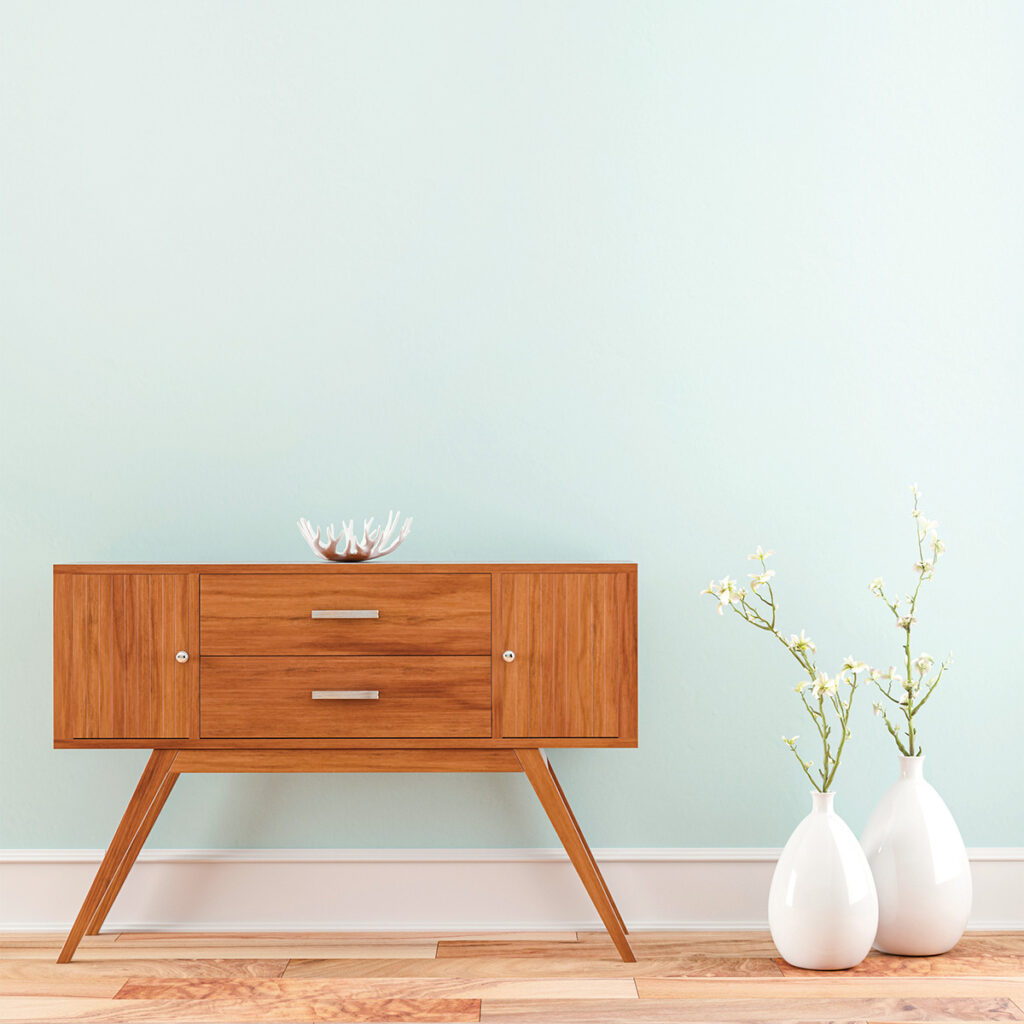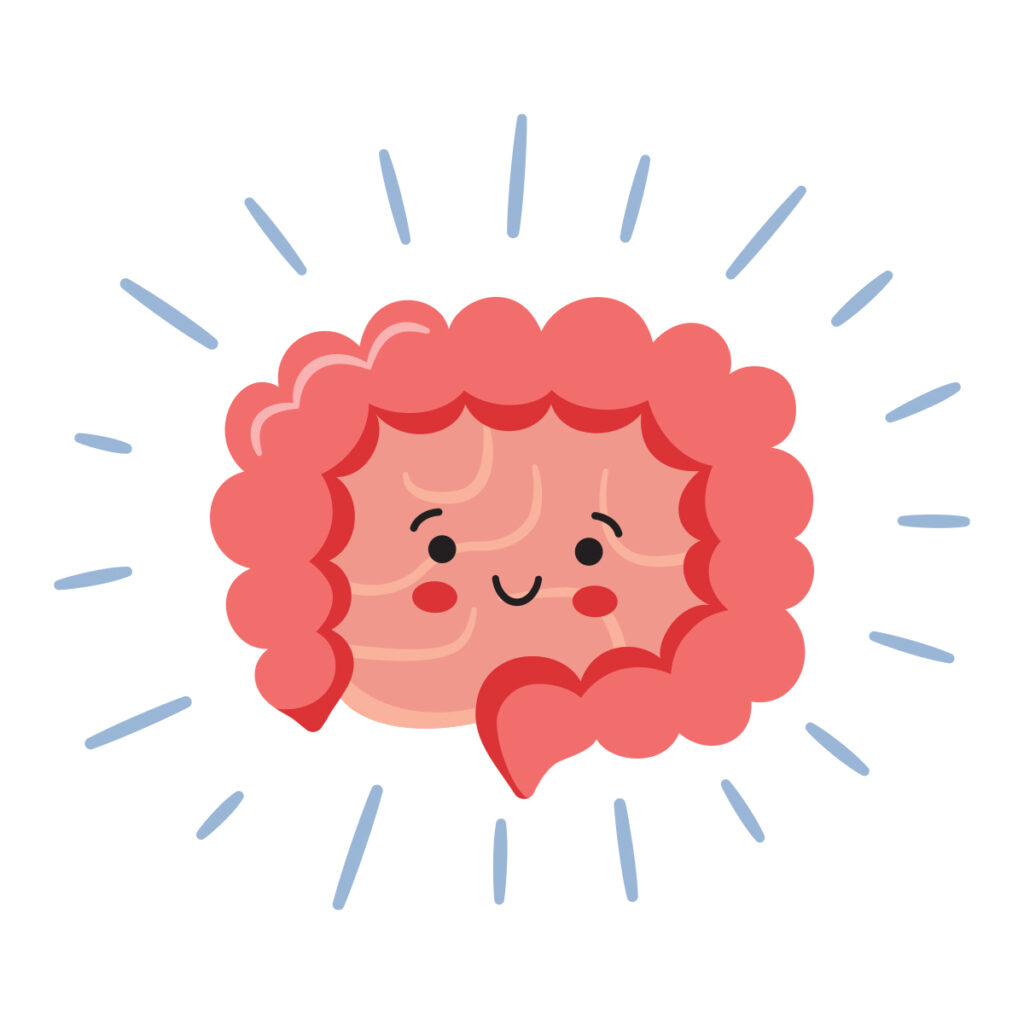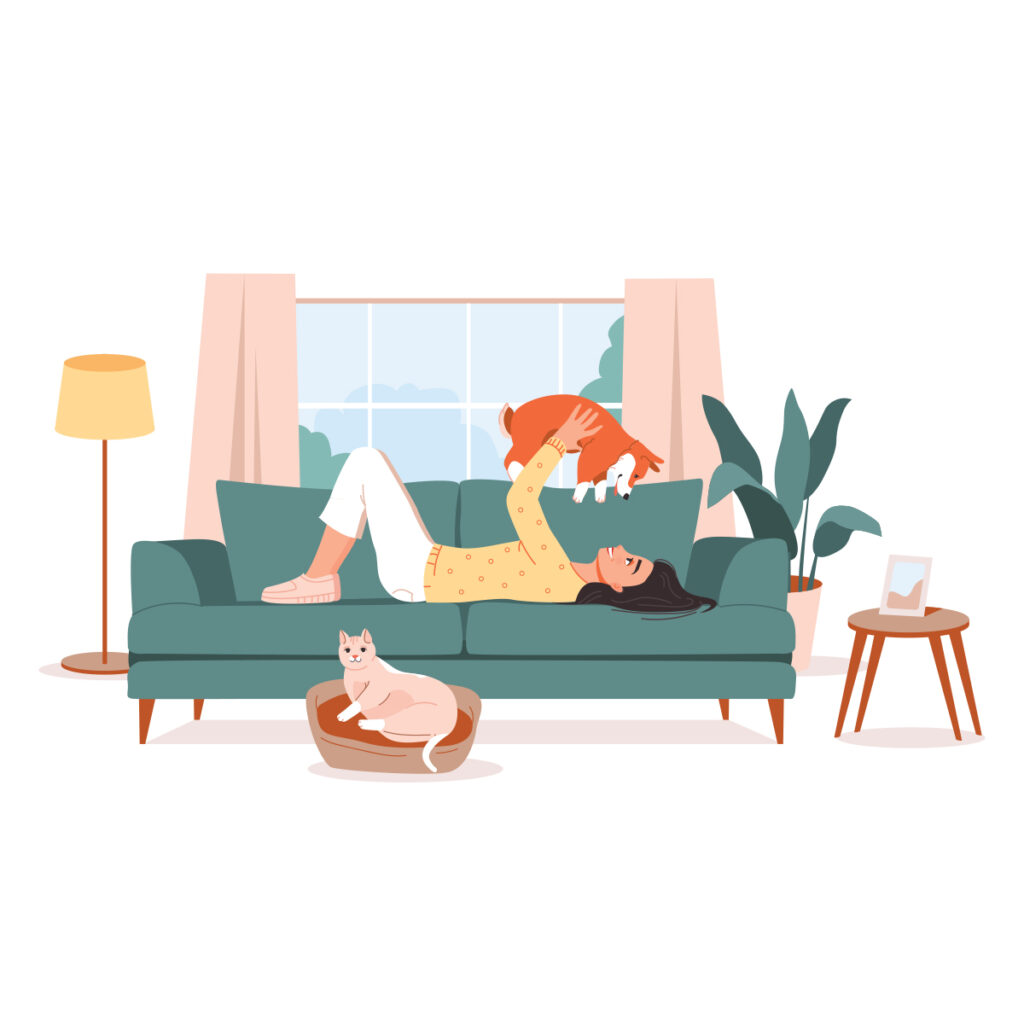Designed With Happiness in Mind
How Home Interiors Can Boost Mental Health
There is a strong correlation between home interiors and mental health. Clutter is known to increase stress, and a lack of décor can be depressing; but open, brightly lit spaces can feel like a breath of fresh air and inspire good feelings. Because many of us spend a lot of time indoors, it is important to take note of how our environments affect us. Small design choices can create a big boost of positivity in our daily lives.
Here, we spoke with Kaysie Strickland, the founder and executive director of Homes & Havens, a nonprofit offering mindful interior design services for recovering individuals in need of healing spaces. As a trauma-informed designer, Strickland shares insights and offers tips for creating an uplifting space.
HS: What impact do home interiors have on our mental health?
KS: Our homes hold our stories, and yet most of the people I’ve worked with haven’t really named that story or they need help naming it. People typically design a space around what they see others doing on social media or TV, instead of approaching their home as a vessel of healing to their own story. Much like our bodies, our homes tell a story about our struggles but also our hope – I love helping people create spaces around an anthem that will sustain their journey into a brighter future.
HS: What are the first things a person should consider when designing a space to boost their mental health?

KS: Eliminating things like clutter, items you are holding onto out of obligation, and reminders of painful seasons can be helpful. Natural light, soothing colors, and meaningful artwork can really make a difference in making a space feel hopeful.
HS: What is one thing that people tend to overlook in their home interiors?
KS: When I work with clients, their story and mission for their home are my primary focus. I feel like it impacts everything. Staying sensitive to their story helps me create options that feel meaningful and adaptable to their life as it changes.

HS: Can the layout of a room make a difference? Any tips for arranging furniture?
KS: This is a fun science! Each space is different, but I typically recommend creating clear pathways for walking and using furniture and rugs to help create zones for different purposes.
HS: What do you typically take into consideration when choosing the right furniture for a space?
KS: I look for durable, fun, and comfortable pieces that fit the budget and the season of life.
HS: Do you have any tips for people who may struggle to keep their space clean and organized?
KS: Our stories have a huge impact on how we create, organize, and maintain our spaces. I would ask gentle questions about their history with cleanliness and organization, but also what season of life they find themselves in. Parents with little kids or pets may need permission to relax about the disorder or to choose what zones of the house matter most to them. People struggling with depression, burnout, or anxiety may find it impossible to keep up and might need extra support with cleaning or organizing things.
HS: What are some small changes a person can make to have an immediate impact on their space?
KS: Let the light in and buy a plant! Turn off the overhead lights and add as many lamps as possible!

Kaysie Strickland
Founder and Executive Director, Homes & Havens




